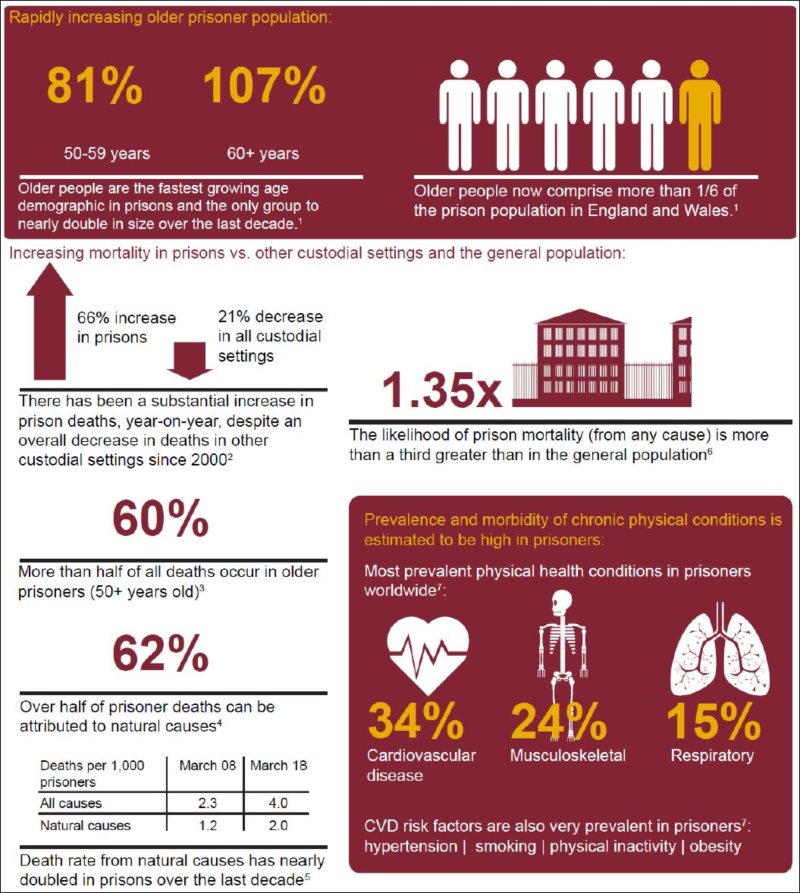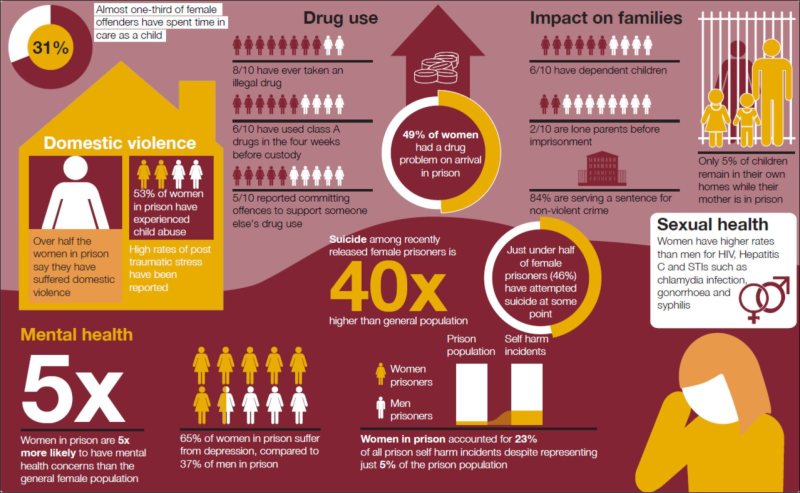By Russel Webster
Public Health England’s annual health and justice review highlights specific health needs of women and older prisoners.
Prison exacerbates health problems
Public Health England’s National Health and Justice Team has just (19 July 2018) published its Health and Justice Annual Review for 2017/18.
The team’s mission is to improve health, reduce health inequalities and drive down offending and reoffending behaviour by understanding and meeting the health and social care needs of people in contact with the criminal justice system (in custody and in the community) through collaborative work with statutory and voluntary sector partners and with service users.
People in prison have multiple complex needs with higher levels of physical health, mental health and substance misuse needs than their peers in the community. These issues are often complicated by homelessness, joblessness, indebtedness or social isolation and poor access to health services appropriate to their needs.
Imprisonment can exacerbate some of these challenges or provide an opportunity to address them, and PHE makes it clear that they recognise the impact of the prison environment on the ability to deliver high quality healthcare and the need for prisons to create an ‘enabling environment’ which supports healthcare and other service providers to improve health and wellbeing.
The report contains considerable detail about the structure, remit and statutory partnerships of the Health and Justice Team but this post focuses on some of the key health challenges identified by this annual review, mainly summarised in the infographics below.
Healthcare needs of older prisoners
Our rapidly increasing population of older prisoners is well-documented, the resulting healthchare challenges are set out in the infographic below; particularly notable is the fact that the death rate from natural causes in prison has almost doubled over the last decade.
Diseases responsible for the greatest morbidity and mortality in the general population have particularly high prevalence rates in older prisoners (50 years and older). Further, the burden of important diseases like ischaemic heart disease, diabetes and chronic obstructive pulmonary disorder (COPD) are up to 20 times higher in the older cohorts, with older people in prison often having morbidity rates and functional abilities similar to peers in the community 10 years their senior.

Healthcare needs of women prisoners
Women in prison are often more affected and have disproportionately higher levels of mental health, suicide, self-harm, drug dependence and other health needs compared to male prisoners. A particularly striking statistic is that half of women prisoners report committing offences to support someone else’s drug use.



//
This content has been republished with permission from the author. See the original here.
Russel Webster is an expert in Criminal Justice and substance misuse, and the author of the blog russelwebster.com


